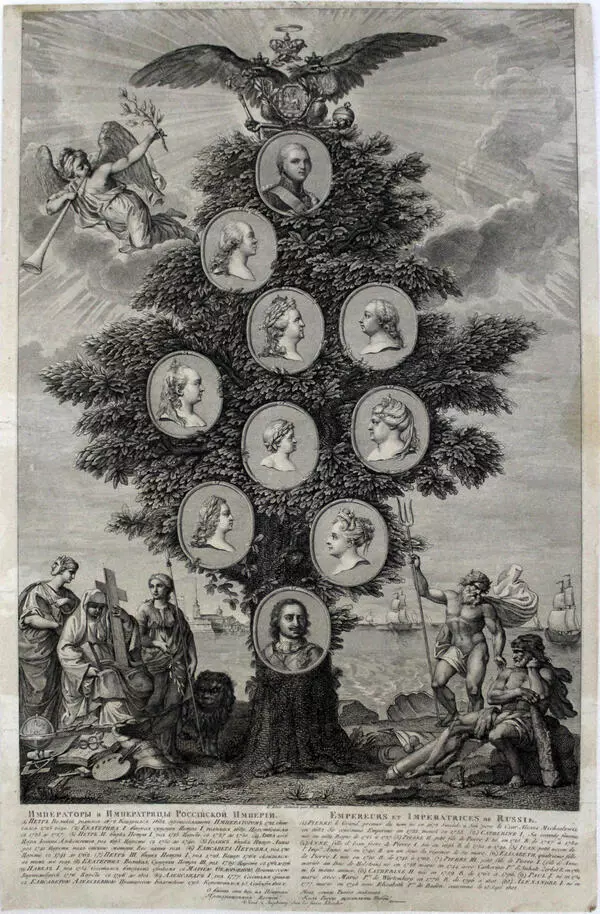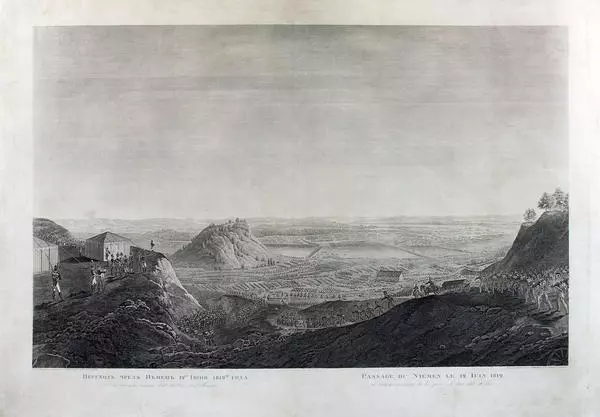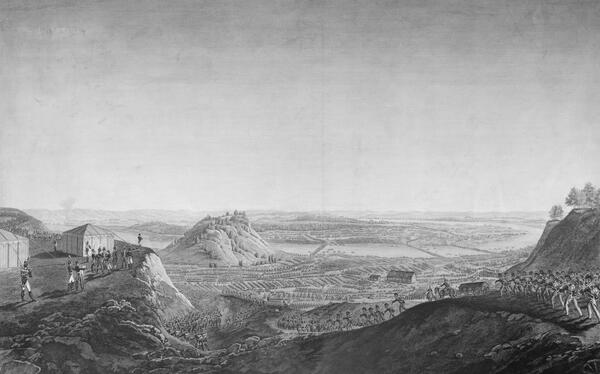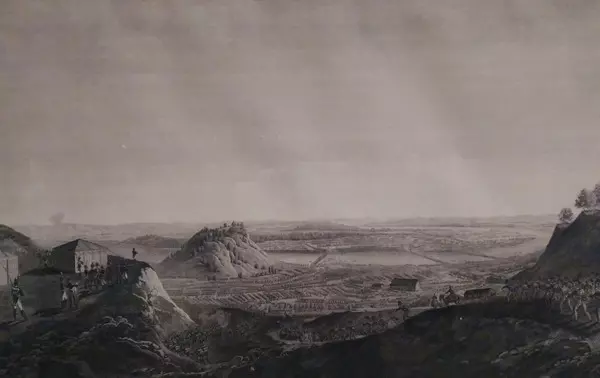Napoleon’s invasion of the Russian Empire began on June 12 (24), 1812, when his Grand Army crossed the Neman River, along which the Russian border passed at that time, near the town of Kovno — present-day Kaunas in Lithuania. To do this, they built three bridges.
Napoleon’s army was enormous — over 600,000 soldiers. Of these, 450,000 were part of the first echelon that invaded Russian territory. Hence, the crossing took almost a week.
On the first day of the crossing, Napoleon Bonaparte was on the left bank of the Neman and watched his troops through a telescope, which were continuously moving towards the river from the forest. The soldiers knew that the French emperor was watching and kept trying to spot the figure on the hill and greet him.
The engraving “Crossing the Neman on June 12 (24), 1812” is a classic depiction of this episode. It was made by Ignaz Sebastian Klauber. He based it on a drawing by Giuseppe Pietro Bagetti (1764–1831), an Italian architect and battle artist who served at that time in the Napoleonic army in the rank of engineer-geographer-captain and witnessed the Neman crossing.
Bagetti’s main task was to create watercolors that would capture the achievements of the French army, and the original drawing became one of them. After Napoleon’s defeat, Giuseppe Bagetti’s drawing came to St. Petersburg. Between 1814 and 1817, Ignaz Sebastian Klauber (1753–1817), a Bavarian who was working in Russia at that time, made an engraving based on it.
Klauber’s engraving gained wide acclaim. It is known in a large number of copies thanks to the successful composition chosen by Bagetti. It fully conveys both the scale of the event and its characteristic details, and combines romantic picturesque elements with an authentic depiction of the crossing.
The main space of the engraving is a wide panorama of both banks of the Neman, across which three bridges have already been built. The Grand Army moves towards them. The regiments occupy the entire foreground of the picture. Napoleon and his commanders stand on a steep hill on the left side of the engraving.






